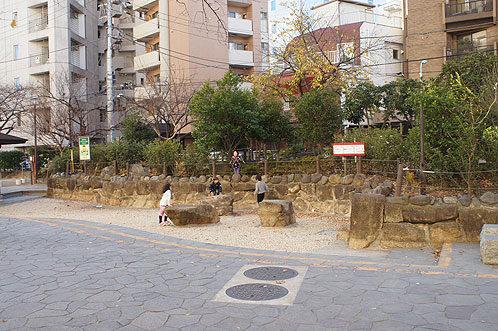Nestled in the Hiroo neighborhood of Tokyo, the Yamatane Museum of Art serves as a remarkable testament to the beauty and depth of Japanese art. From the striking details of Nihonga paintings to the allure of Ukiyo-e prints, this museum houses a rich collection that spans centuries.
A Tribute to Japanese Art
Founded in 1966 by Yamazaki Taneji, a prominent businessman and art connoisseur, the Yamatane Museum of Art was the first museum in Japan dedicated exclusively to Nihonga – traditional Japanese-style paintings. Over the years, it has evolved to include a wide range of Japanese art forms, earning a reputation as a vital institution for the preservation and promotion of Japan’s artistic heritage.

The Collection
The museum’s collection, a testament to Yamazaki’s discerning taste and deep love for Japanese art, spans several eras and styles. Its core remains the Nihonga paintings, featuring works from prominent artists like Hashimoto Gaho, Yokoyama Taikan, and Hishida Shunso. These paintings, characterized by their use of natural mineral pigments and traditional Japanese painting techniques, are breathtaking in their vibrancy and attention to detail.
In addition to Nihonga, the museum also houses a collection of Ukiyo-e woodblock prints, modern Japanese Western-style paintings, and ancient ceramics. Noteworthy among these are the intricate Ukiyo-e prints by masters such as Hokusai and Hiroshige, and the mesmerizing ceramic pieces dating back to the Jomon period.
Exhibitions and Events
The Yamatane Museum of Art regularly hosts themed exhibitions, offering visitors an opportunity to delve deeper into specific artists, styles, or periods. From exploring the influences of Buddhism on Nihonga to showcasing the evolution of Ukiyo-e through the Edo period, these exhibitions provide a comprehensive understanding of Japanese art’s rich tapestry.
The museum also organizes art-related events such as lectures, workshops, and guided tours. These events, often led by experts in the field, offer unique insights into the displayed works and the broader context of Japanese art.
Museum Amenities
Beyond the exhibit rooms, the Yamatane Museum of Art offers additional amenities to enhance your visit. Its museum shop carries a range of art books, postcards, and original goods perfect for souvenirs or gifts. The café, with its tranquil garden view, is a delightful spot to unwind and reflect on the artworks over a cup of matcha or a light meal.
The Legacy of Yamazaki Taneji
The museum owes its existence to Yamazaki Taneji, its founder and a passionate patron of Japanese art. Yamazaki’s devotion to Nihonga emerged during a time when Western-style art was gaining popularity in Japan, threatening to eclipse traditional art forms. He established the museum as a platform to preserve and promote Nihonga, ultimately playing a crucial role in keeping this art form alive and relevant. His legacy is echoed in the museum’s continual commitment to showcasing and supporting Japanese art.
Art Conservation Efforts
The Yamatane Museum of Art also plays a significant role in art conservation. The museum’s staff includes experts in the preservation and restoration of Japanese art. They employ traditional methods and materials to ensure that each piece of art—whether it’s a centuries-old ceramic pot or a delicate Nihonga painting—retains its original beauty and integrity for future generations to appreciate.
Nearby Attractions
The Yamatane Museum of Art’s central location in Tokyo puts it within easy reach of several other noteworthy attractions:
- Nezu Museum: Just a 15-minute walk from the Yamatane Museum of Art, the Nezu Museum is home to an impressive collection of pre-modern Japanese and East Asian art.
- Roppongi Hills: A short metro ride away, Roppongi Hills is a bustling area offering shopping, dining, entertainment, and the famous Mori Art Museum.
- Meiji Shrine and Yoyogi Park: These iconic spots offer a serene retreat from the city buzz. The Meiji Shrine is one of Tokyo’s most revered Shinto shrines, and the adjacent Yoyogi Park is perfect for a leisurely stroll or picnic.
Directions
The Yamatane Museum of Art is conveniently located in Tokyo’s Hiroo neighborhood, making it easily accessible by public transport.
By Metro: The museum is a 10-minute walk from Hiroo Station on the Tokyo Metro Hibiya Line.
By Bus: Multiple bus lines, including the ’01’, ’06’ and ’87’, stop at Hiroo Station, which is a short walk from the museum.
Once you reach the museum, the staff are more than willing to provide information and directions to help you navigate your way to other nearby attractions. Enjoy your exploration of this vibrant corner of Tokyo.
The Sum Up
A visit to the Yamatane Museum of Art is not just a visual feast but an immersive journey into Japanese culture and history. Through the delicate strokes of a Nihonga painting, the intricate carvings of a Ukiyo-e print, or the timeless form of an ancient ceramic, you connect with the spirit of Japan – its values, its aesthetics, and its narrative.
The Yamatane Museum of Art offers a unique, enriching experience that leaves you with a deeper appreciation of Japanese artistry.






